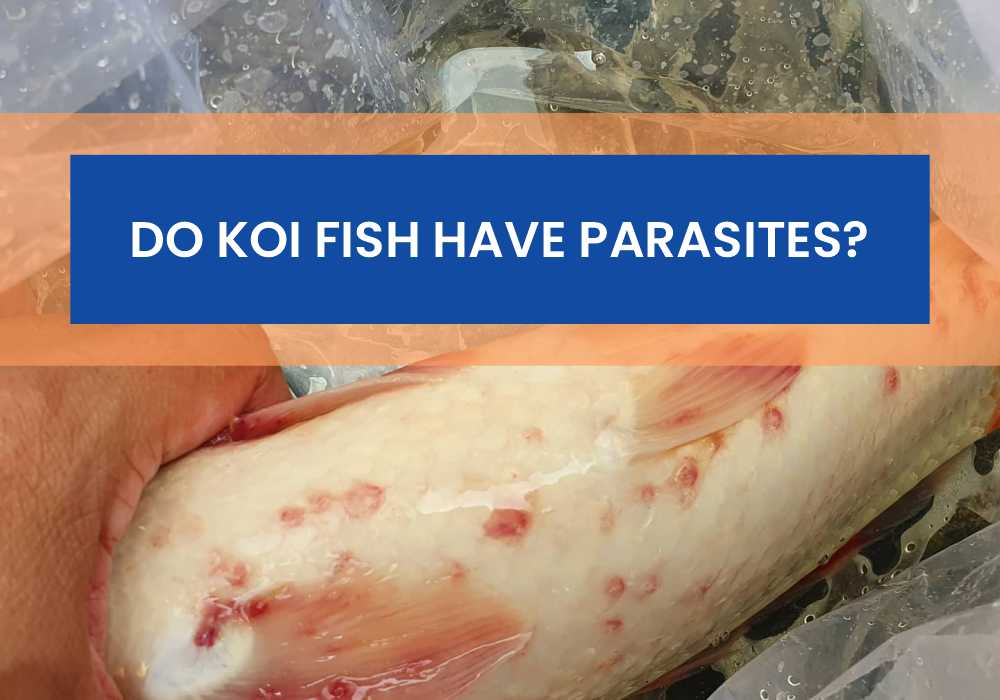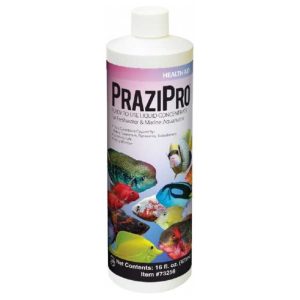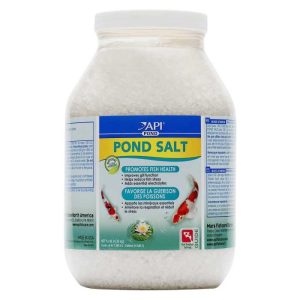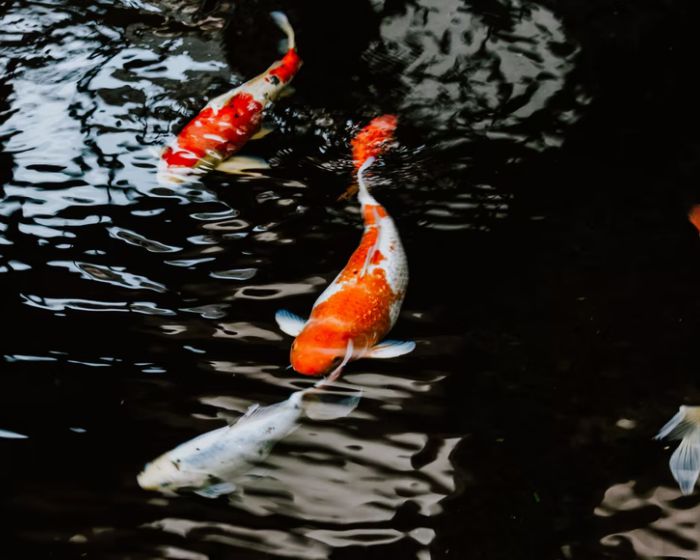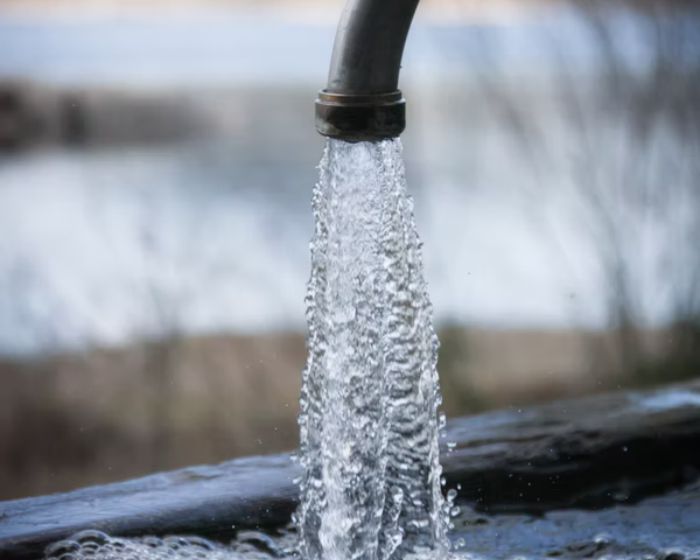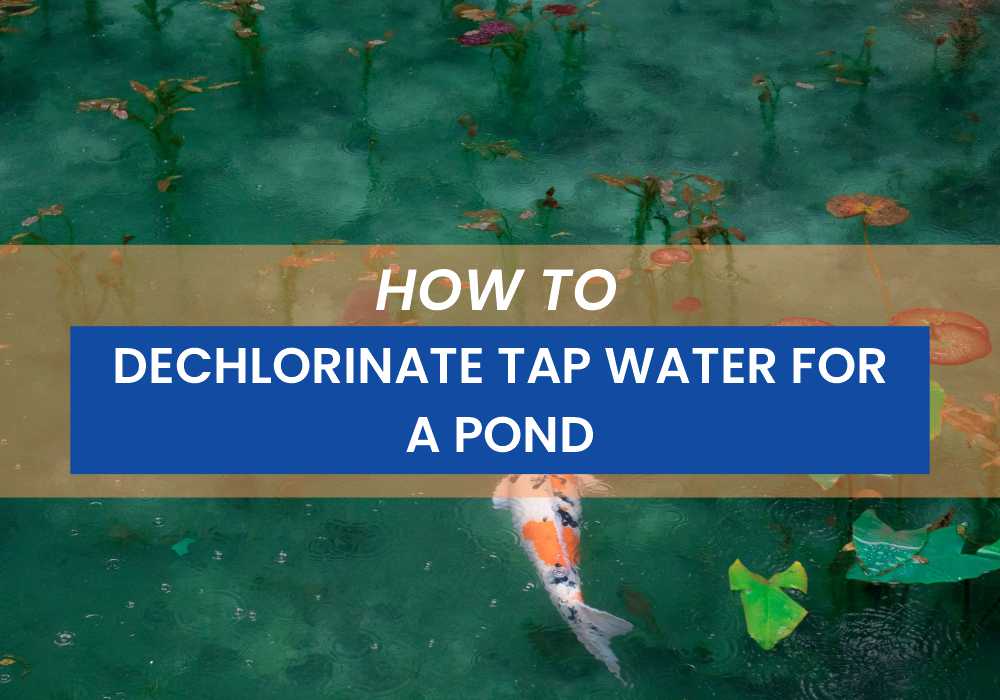As an Affiliate, We may earn a commission that doesn't cost you extra from qualifying purchases using links in this post. It helps keeps this blog running.
Just like every other living creature disease, parasites, and illness are inevitable. As koi fish are kept in ponds, they are bound to contract some form of parasites at some point in their lives. The good news is that koi are quite resilient when it comes to parasites and if you take proper care of your koi pond, the chances of your koi fish getting sick from parasites are quite low.
So, Do Koi Fish Have Parasites?
Yes, Koi can have parasites. There are two main types of koi parasites: external and internal. External parasites include things like leeches and Anchor worms, while internal parasites include flukes and tapeworms.
Below are 15 different types of common parasites koi fish can contract and get infected with:
- Flukes: Fluke parasites are a type of parasitic flatworm that can infect fish by entering their body system through the gills or skin, and then traveling to the blood vessels, where they attach themselves and begin feeding. In some cases, flukes can also cause blockages in the blood vessels, which can lead to death. Infected koi fish may also exhibit signs of illness, such as lethargy, loss of appetite, and increased mucus production.
- Tapeworms: Tapeworm parasites are a type of worm that attach themselves to the intestine of their host and feed off of their nutrients. Fish can become infected with tapeworms through contact with contaminated water or by eating infected prey. Symptoms of tapeworm infection include weight loss, poor appetite, and diarrhea. In severe cases, the parasite can cause blockages in the intestines which can be fatal.
- Parasitic Copepods: Parasitic copepods are tiny, segmented worms that live in fresh and salt water environments. They typically attach themselves to the gills or skin of fish, where they feed on blood or tissue. Copepods can also infect humans, although this is relatively rare. Fish become infected with parasitic copepods when they eat infected prey, or when the copepods attach themselves to the fish’s skin. Once attached, the copepods reproduce and release their young into the water, where they can infect other fish. Infections with parasitic copepods can cause a variety of symptoms in fish, including lethargy, anemia, and death.
- Carp Pox: Koi Carp Pox is a viral disease that causes Koi to develop hard, waxy lumps. It does not kill Koi and is typically harmless, although it may be unsightly. It’s most common in little Koi and during the cold season. When water temperatures rise in the spring, it usually goes away.
- Lernaea (Anchor Worm): The body of this Koi parasite is about 10 to 12mm long and visible to the naked eye. The parasite attacks Koi fish by burrowing its head into the koi’s tissue, beneath their scale, and only the body and tail are visible. If the affected area is left on Koi for an extended period of time, secondary bacterial infections may develop at the point of contact as a result of the anchors used to attach themselves.
- Costia: Costia is a microscopic Flagellate with three to four flagella. It is most common in recently debilitated fish, but it can also be seen on Koi as a secondary infestation. Costia parasites invade both the skin and gills of Koi, reproduces by binary fission, and causes skin infections as well as gill diseases. The symptoms of Costia infestation include lethargy, clamped fins, rubbing and flashing
- Dactylogyrus (The Gill Fluke): Another common parasite that affects koi and is not visible to the naked eye is Dactylogyrus. They are egg layers and livebearers with a length range of 0.05 to 3.00 millimeters. When Koi are infested by the Gill Fluke, they frequently show typical symptoms of irritation, jumping, flashing, or rubbing themselves against objects in the pond in an attempt to rid themselves of the parasite. Gill Flukes are seen clearly under a microscope, and they appear worm-like and almost transparent, as well as their hooks.
- Columnaris (Flexibacter Columnaris): Also known as Cotton Wool disease, often mistaken for a fungal infection because of its mold-like lesions. Columnaris’ common name comes from the white tufts that develop around the mouth of Koi and spread to their body and fins, often leading to ulcers and a thin appearance.
- Gyrodactylus (The Skin Fluke): Gyrodactylus is a parasitic infection that can affect both freshwater and saltwater fish. The parasites attach themselves to the fish’s skin and fins, causing irritation and inflammation. In severe cases, the infection can lead to secondary bacterial infections, fin rot, and even death.
Fish can become infected with Gyrodactylus through contact with infected water or other fish. Good aquarium/pond maintenance practices, such as regular water changes and quarantine of new fish, can help prevent the spread of this disease. - Dropsy: Dropsy is a condition that results in the swelling of a fish’s body due to an accumulation of fluid in the tissues. This can be caused by a number of factors, including bacterial infections, parasites, and even physical injuries. In many cases, the exact cause of Dropsy is unknown.
Fish can become infected with Dropsy through contact with contaminated water or food, or by coming into contact with another fish that is already infected. Once a fish has been infected, the parasite that cause the condition can spread quickly throughout the fish’s body, causing the tissues to swell. In severe cases, Dropsy can be fatal.
However, there are some treatments that may help which include adding salt to the water, increasing the pond water temperature, and providing the fish with plenty of oxygen. If Dropsy is suspected, it is important to isolate the affected fish from other fish in order to prevent the spread of the condition. - Argulus (The Fish Louse): Argulus is a parasitic crustacean that infests freshwater fish. The adult argulus attaches to the fish using its suckers, piercing the skin and feeding on the host’s blood. This can cause serious health problems for the fish, including anemia and death.
Argulus is most commonly found in ponds and lakes, where they can infect a wide variety of fish species. They are particularly prevalent in koi ponds, where they can do significant damage to the fish population. Argulus infections are usually spread by contact with infected water or fish. The parasites can also be introduced to a new pond or lake via wild animals that carry them on their fur or feathers. Once established in a new body of water, argulus can spread rapidly and infect a large number of fish.
To prevent argulus infections, it is important to maintain good water quality and to avoid introducing parasites to new bodies of water. If argulus is found in a pond or lake, prompt treatment is essential to preventing serious damage to the fish population. - Chilodonella: Chilodonella is a free-living ciliate protozoan that can cause severe skin irritation and ulceration in fish. The parasite attaches to the fish’s skin and gills, causing inflammation and damage. Chilodonella can also infect the eyes, resulting in blindness. Koi fish become infected with Chilodonella when they come into contact with contaminated water. The parasite can also be transmitted from one fish to another through close contact. Chilodonella is a serious threat to the health of koi fish and can lead to death if left untreated. Early diagnosis and treatment are essential to preventing serious health problems in fish.
- Trichodina: Trichodina is a parasitic ciliate that infects the skin and gills of fish. The parasite attaches to the fish’s skin and feeds on mucus, blood, and tissue. Trichodina can cause irritation and inflammation of the skin, which can lead to secondary bacterial infections. In severe cases, trichodina can cause death in fish. Fish can become infected with trichodina through contact with contaminated water or other fish.
- Whitespot: Whitespot is a highly contagious viral disease that affects both freshwater and marine fish. The virus is spread through contact with infected fish, and can quickly decimate an entire population of fish if left unchecked. There are several different strains of the virus, each of which is specific to a particular type of fish. However, the most common strain affects freshwater tropical fish, such as goldfish and koi.
- Nematodes: Nematodes are microscopic, worm-like creatures that can infect fish. Fish become infected with nematodes when they eat contaminated food or come into contact with contaminated water. Nematodes can cause a variety of problems for fish, including skin irritation, inflammation, and damage to the internal organs. In severe cases, nematode infections can be fatal.
How Do You Get Rid Of Parasites In Koi Fish and Koi Pond?
Koi parasites are usually not fatal, but they can cause serious health problems if left untreated. Koi that are heavily infested with parasites can become weak and listless, and may even stop eating. In extreme cases, koi parasites can cause death.
Five of the best ways to prevent koi parasites and get rid of them is to:
- Quarantine New Fish: Always try to quarantine new koi before adding them to your pond. This will allow you to check them for parasites and treat them accordingly before they have a chance to infect your other koi.
- Regular Checkup: You should also regularly check your koi for any signs of parasites and treat them immediately if you notice anything out of the ordinary.
- Quarantine Affected Fish: If you quickly notice one of your koi has been infected with a parasite, the smart and first thing to do is to quarantine the affected fish from the rest of your koi. This will help to prevent the parasites from spreading.
- Treat the affected Fish: You should then treat the koi infected with treatment such as the Hikari Prazipro which is recommended by my personal fish vet whom I also call my koi specialist. This Hikari Prazipro is in the form of ready-to-use fish bath medication, which you’ll need to bathe your koi with for some time, or you might just use an alternative physical treatment, such as a salt bath with the API Pond Water Salt.
- Raise Koi Pond Temperature: Another way to get rid of parasites and keep them under control is to raise the temperature of your koi pond. This will kill off the parasites, but it can also be harmful to your koi if the temperature is raised too high, so be sure to ask your vet or koi specialist what the ideal temperature is for killing parasites.
- UV Filter: A third way to get rid of parasites is to use a UV filter. This will kill the parasites as they pass through the filter, but it is important to note that this will not remove the parasites from your koi pond completely, so you will still need to take measures to clean your koi pond on a regular basis.
@gretaherrmann86 our Koi infected with costia parasite ? #koi #koifish #fish #pond #koipond #japanesekoi #tiktokgermany #beautifulcreatures ♬ original sound – GretaHerrmann
The overall best way to prevent your koi from getting parasites is to keep your koi pond clean. This means doing things like cleaning out debris, making sure there is plenty of aeration, and keeping the water quality high.
No matter which method you choose to get rid of parasites, it is important to make sure that you follow the directions carefully and do not use any treatments that are not specifically designed for koi fish. Using the wrong treatment can be just as harmful to your koi as the parasites themselves.
How Do Koi Fish Get Parasites?
Koi parasites can come from varieties of things and there are a few different ways koi can get parasites some of which are outlined below:
- Contaminated Water: One way is through contact with contaminated water. This could happen if the koi come into contact with water that has been contaminated with sewage or other waste.
- Infected Food: Koi can also pick up parasites by eating infected food, such as worms or insects.
- Hereditary: Koi can be born with parasites if their mothers are infected.
- Contact: Koi fish can be infected with a parasite when in contact with other koi that are already infected.
What Do Koi Fish Parasites Look Like?
Most koi parasites are small and hard to see with the naked eye. However, you may be able to see some of the larger pond parasites, such as flukes and tapeworms which look like a thread, attached to the koi’s body. If you look closely, you might also be able to see small white spots on the koi’s skin, which are the eggs of some parasites.
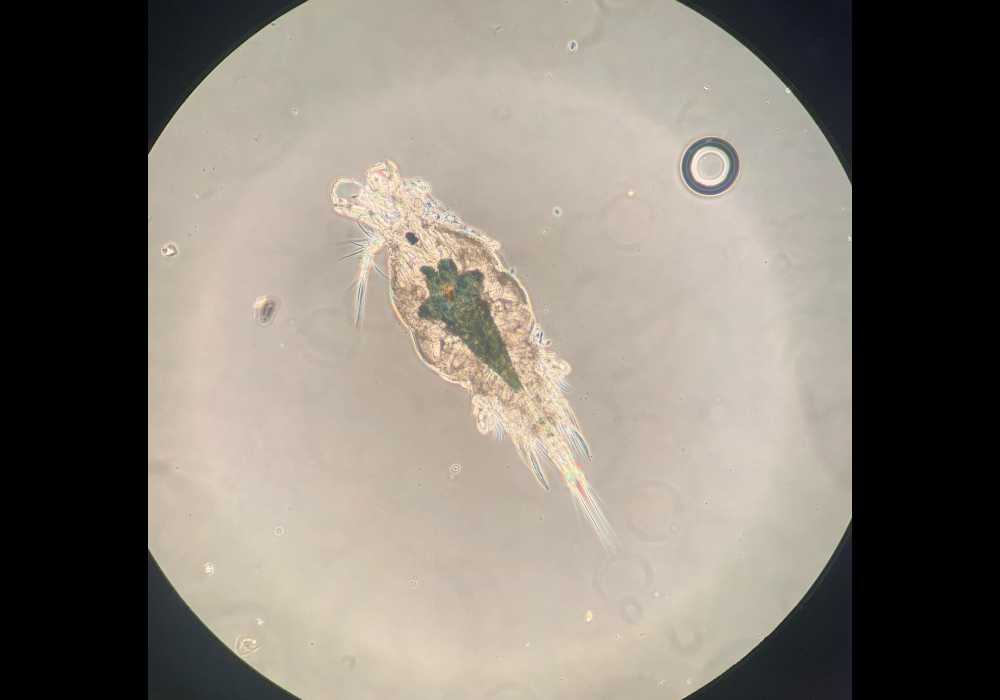
You will be able to identify some Koi fish pond parasites from the look of the effects they have on the fish, such as skin soreness, swollen skin, ragged fins, and lethargy.
How Do You Know If Your Koi Has Parasites?
The best way to determine if your koi has parasites is to take a close look at their body. Look out for any white spots, sores, or bumps. If you see anything that looks out of the ordinary, it’s best to take your koi to a vet or koi specialist to have them checked out.
What Are The Symptoms Of Koi Parasites?
If koi parasites are left unnoticed and untreated, they can cause a number of problems for your koi. The most serious of these is death, although this is relatively rare. More commonly, koi parasites will cause weight loss, skin damage, and fin rot. In severe cases, they can also cause gill damage, which makes it difficult for the koi to breathe.
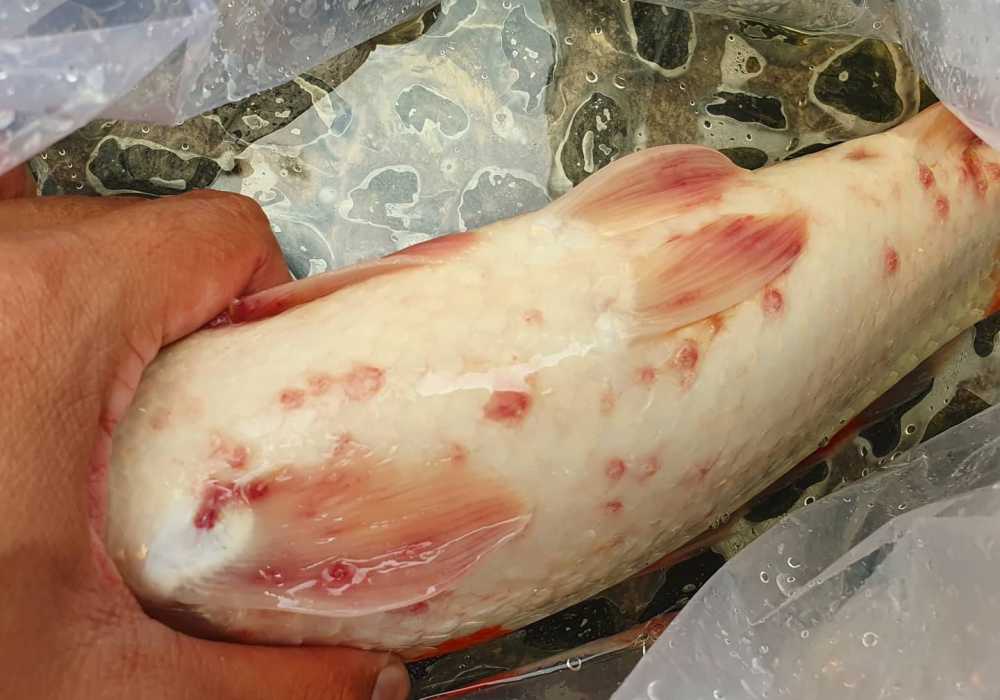
Koi parasites can be a serious problem, but they can be noticed early and easily prevented with a little bit of care and attention. If your koi have parasites, you might notice some of the following 9 symptoms:
- Loss of Appetite: One of the first signs that your koi have parasites is a loss of appetite. If they’re not eating as much as usual or if they’re completely off their food, it’s a sign that something is wrong.
- Weight Loss: Another symptom of koi parasites is weight loss. This is because the parasites are stealing nutrients from the koi, which can lead to weight loss over time.
- Lethargy: Infected koi may also appear lethargic and listless. They might not be as active as usual and may just float around or sit at the bottom of the pond.
- Skin Sores: Some parasites can cause skin sores on koi, which may look like red or white spots. These sores can also lead to fin rot, which is when the koi’s fins
- Gasping For Air: If your koi are infected with a particularly nasty parasite, you might notice them gasping for air at the surface of the pond. This is because the parasites are causing irritation and inflammation in their gills, which makes it difficult for them to breathe.
- Constant Rubbing Against Objects: Koi that are infected with parasites might also rub themselves against objects in the pond, such as rocks or plants. This is because they’re trying to relieve the itchiness and irritation caused by the parasites.
- Flashing (Swimming Erratically): Flashing is when koi swim erratically and quickly as if they’re trying to shake something off their body. Although this could be as a result of some other thing like stress it can also be a sign that the koi are uncomfortable with something like parasites and then reacting to it.
- Clamped Fins: Clamped fins are another sign that koi might have parasites. The koi’s fins will lie flat against their body instead of streaming outwards when they swim. This is usually a reaction to the irritation which may be caused by parasites.
- Ulcers On The Body: Ulcers are open sores that can occur on the koi’s body and are usually a sign of a bacterial infection. However, parasites can also cause ulcers, so it’s important to get them checked out by a vet if you notice any.
Of course, there are many different treatment options available for koi with parasites. The type of treatment your koi fish gets will depend on the type of parasite it is infected with and the severity of the infestation. So, if you notice any of the above symptoms in your koi, it’s important to take them to a vet or koi specialist as soon as possible. They will be able to carry out tests to confirm whether or not the koi have parasites and can then treat them accordingly.
What Do Koi Fish Flukes Look Like?
Koi flukes are the most common type of tiny, flatworm-like parasites that attach themselves to the koi’s body and gills. They are usually white or yellow in color and can range in size from 1 to 5mm.
How Do I Know If My Koi Has Flukes?
The most common symptom of koi flukes is heavy breathing and gasping at the surface of the water for air. If you see your koi acting this way or you notice your koi are scraping themselves against objects in the pond or if they seem to be gasping for air, it could be a sign that they have flukes. You might also see white spots on the koi’s body or gills, which are the eggs of the flukes.
How Do I Treat Koi Flukes?
The good news is that there are a number of effective treatments available for koi flukes. The most common treatment is to use a medication that contains the active ingredient praziquantel like the Hikari Prazipro Liquid Concentrate, which is available in powders, liquids, and tablets. You can also use copper sulfate to treat koi flukes, but it can be toxic to koi if not used properly.
It is important to follow the directions carefully when using any type of medication and to make sure the affected koi are removed from the pond during treatment. You will also need to do a partial water change after treatment to remove any residual toxins from the pond.
Prevention is the best medicine when it comes to koi flukes and other parasites. Be sure to quarantine new koi before adding them to your pond and perform regular pond maintenance to help keep your koi healthy and parasite-free.
To prevent koi flukes from infecting your koi fish, it’s important to keep your pond clean and free of debris where the flukes can hide. You should also quarantine new koi fish before adding them to your pond to make sure they are not carrying any parasites.
What Causes White Spot On Koi?
White spot disease is caused by a parasite called Ichthyophthirius multifiliis, which is also known as “ICH.” This parasite attaches itself to the koi’s body and gills and feeds on its blood. The most common symptom of whitespot disease in fish includes small white spots or patches on the koi’s body, fins, and gills.
How Do I Treat White Spot Disease?
There are a number of effective treatments available for white spot disease. The most common treatment is to use a medication that contains the active ingredient malachite green. You can also use copper sulfate to treat white spot disease, but it can be toxic to koi if not used properly.
As with any type of medication, it is important to follow the directions carefully when using any type of treatment for white spot disease. You will also need to do a partial water change after treatment to remove any residual toxins from the pond.

I’m Akin Bouchard. Even though I now own several different fish species, I first became a koi pond owner because I loved these creatures and wanted to turn my passion into something more serious. I take pride in my collection of koi fish and love sharing my knowledge with others interested in these beautiful creatures.

